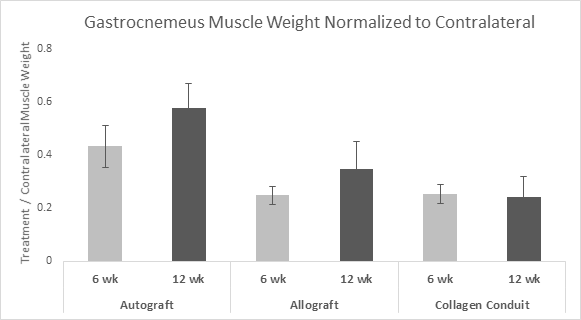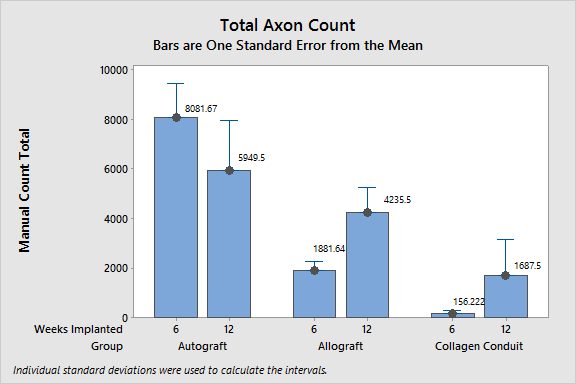Evaluation of Peripheral Nerve Repair Utilizing a Human Nerve Allograft in an Athymic Rat
Paul Bonvallet, PhD, Benjamin Mintz, PhD, Joshua Czeczuga, PhD, Elaina Panas, PhD, Andrew Mesaris, B.S., Simon Archibald, PhD and Ankur Gandhi, PhD, Integra LifeSciences, Princeton, NJ
Introduction
Nerve autografts remain the gold-standard for peripheral nerve repair; however, they are limited in supply and have the associated morbidity on harvest. This has led to the development and widespread clinical use of nerve guidance conduits and processed nerve allografts. This study evaluates the efficacy of a collagen conduit, an autograft, and a processed human allograft in an athymic rat sciatic nerve gap defect model.
Materials & Methods
Athymic RNU rats were used to avoid xenograft rejection. A 15mm critical size sciatic nerve defect was created. Either a collagen conduit (Integra LifeSciences), an autograft, or allograft was sutured in place. 5 mm of sciatic nerve was surgically resected from the right hind limb and a 15 mm processed human allograft or an 18 mm collagen conduit with a 1.5mm overlap at each end was sutured. Autograft controls 15 mm in length were cut, inversed, and sutured. After 6- and 12- weeks in-life, bilateral sciatic nerves were harvested, processed, and stained with toluidine blue and both gastrocnemius muscles were weighed. Muscle weights were normalized to the contralateral side. Morphology was assessed via immunohistochemistry.
Results
At 6- and 12-weeks post-implantation, axon counts, gastrocnemius muscle mass, and morphology of nerves were utilized to evaluate the regenerative potential of treatment groups. Autografts expressed the highest number of regenerated axons, followed by allograft, and collagen conduit with the least at both time points (p<0.05, fisher pairwise). Autograft also yielded the highest gastrocnemius muscle mass at both time points, while allograft trended towards having a higher mass than the collagen conduit at 12 weeks. Processed allografts had low residual neurofilament with an intact internal structure relative to native nerve.
Conclusions
Autograft produced the largest number of axons and highest muscle mass at 6- and 12-weeks Processed allografts maintained their structure and yielded higher axon counts than the collagen conduit and had increased axon counts from 6 to 12 weeks, whereas autograft had decreasing axon counts. In conclusion, allograft proved to be a promising treatment option for peripheral nerve regeneration.
Back to 2021 ePosters


